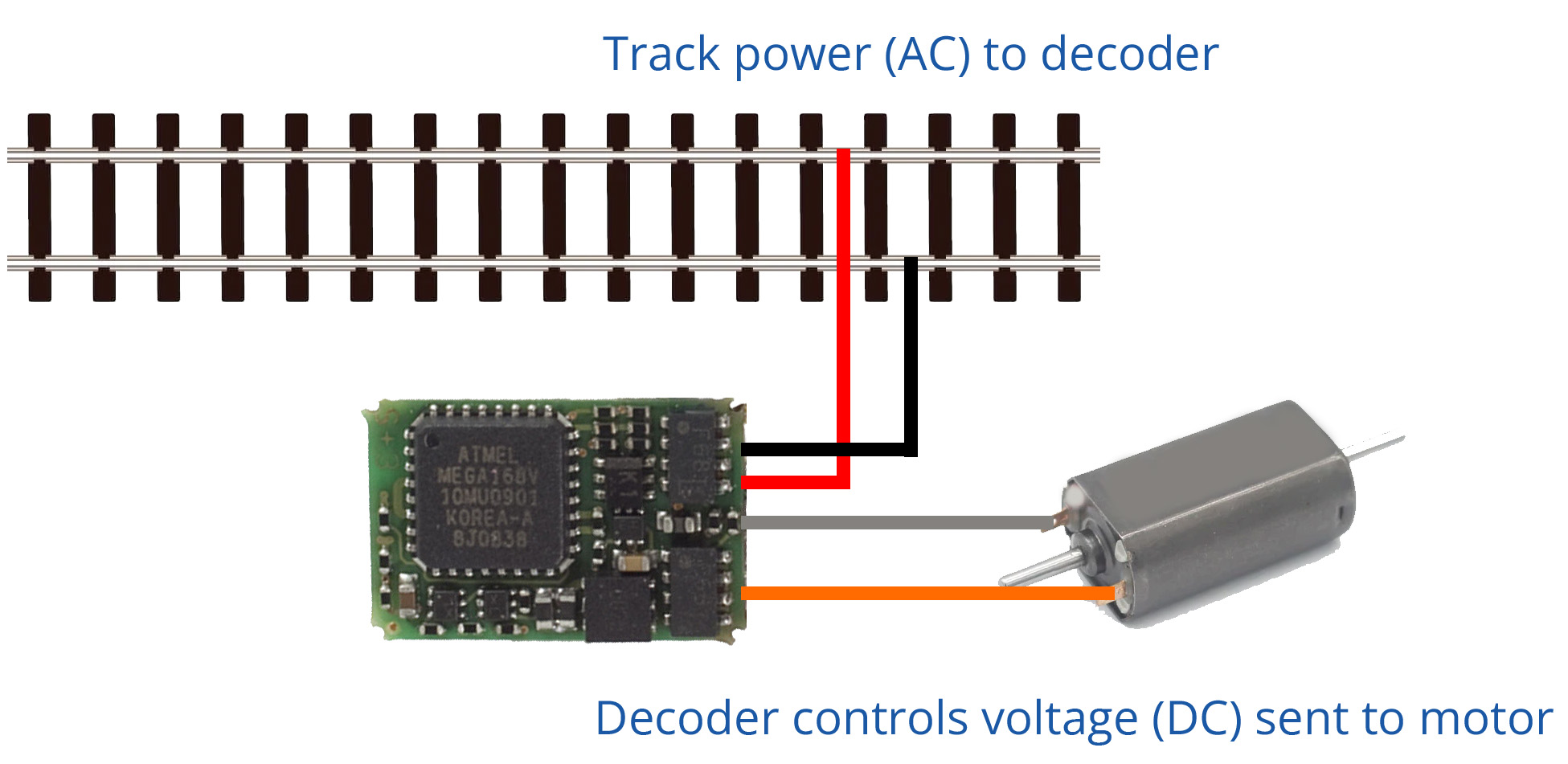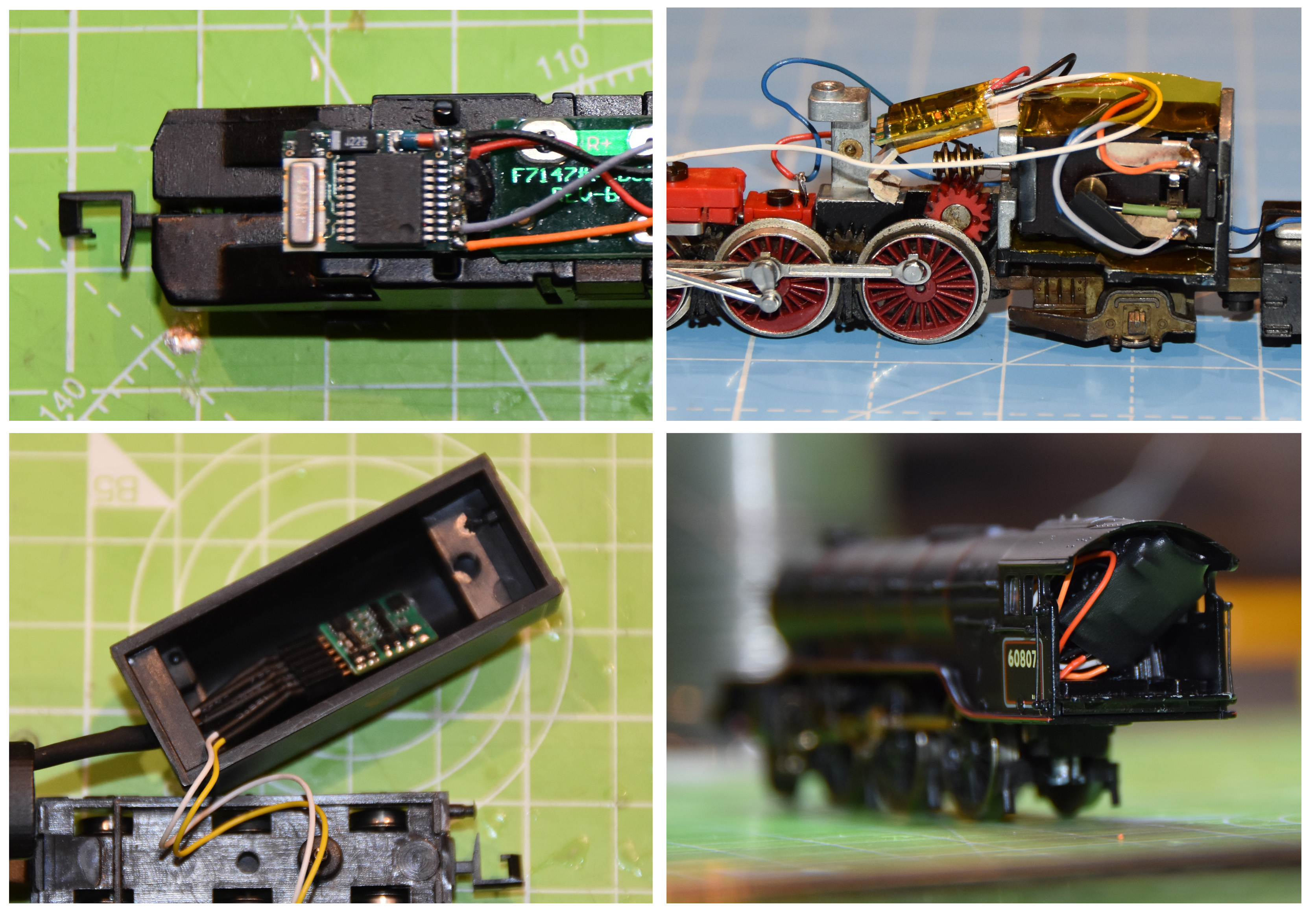Last Updated: 9 June 2025
Beginner's Guide To DCC Conversion
How DCC Works
Analogue (DC) locos work by directly connecting the power coming from the track rails, via the wheels, to the motor. The speed is governed by the amount of voltage the controller is putting into the track: the higher the voltage, the faster the train goes. In simple terms, this arrangement effectively means only one locomotive can be present on the track at any given time.
In a DCC layout, the track is permanently powered - usually to between 12 and 16 VAC. The motors are no longer connected directly to the track, but instead via a DCC decoder. It is this device that takes the AC current from the track, and decides what DC voltage (if any) should be sent to the motor. The way it makes this decision is from commands that are sent to it from the command station, which are encoded over the track's AC voltage. Brian Lambert has a more in-depth explanation.

This system allows multiple locomotives to be on the same track, and to be independently controlled. As the track is permanently powered, it also simplifies powering things such as coach interior lighting which can remain at a constant brightness even if the train is at a complete standstill.
Many modern locos are supplied 'DCC Ready', with a socket somewhere inside the body for a DCC decoder to plug straight in. For older or non-DCC ready examples, some modification is required. The effort required varies depending on the chassis style, particularly where parts of the chassis are 'live', i.e. used as part of the track-to-motor power circuit.
Converting DC Locos to DCC
It is possible to convert non-DCC compatible locos to DCC. The basic process is always the same:
- Test that the loco runs well on a DC layout
- Isolate the motor contacts from the track pickups
- Wire a DCC decoder to the track pickups
- Wire the motor to the DCC decoder
- Find somewhere inside the body to hide the decoder
It is important that the loco runs well in both directions before attempting a conversion. Poor runners do not lend themselves well to DCC.
Due to the size of N Gauge locos, the smallest decoders are usually the best choice as space can be limited. In some older steam locos, it is possible to hide the decoder inside the tender. For smaller locos, there is often no option but to either mill away some of the chassis/body to make room, or to simply put the decoder on the footplate and accept that it won't be as aesthetically pleasing.
